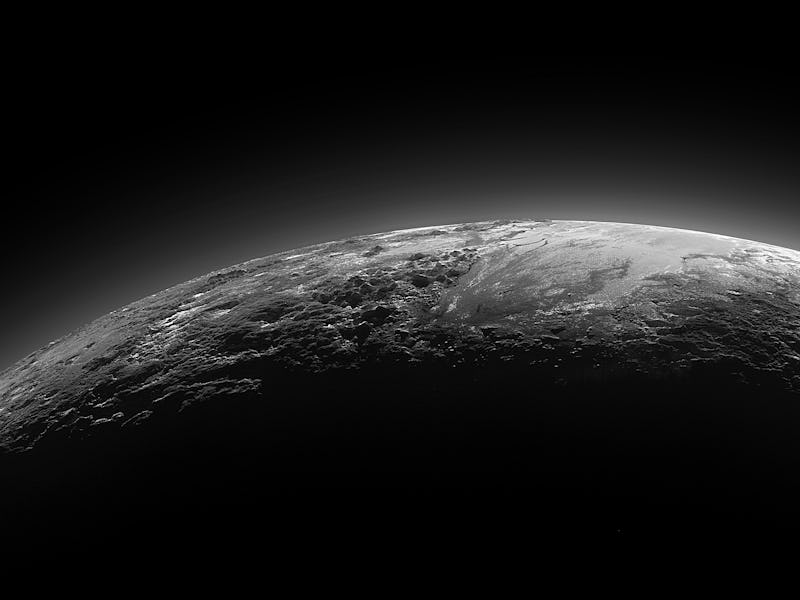Pluto Might Have a Subsurface Liquid Ocean
A new study suggests strange geological activity is the result of a liquid ocean churning away.

Move over Mars — you’re not the only rock in this solar system besides Earth that has liquid water to its name. A new study published in Geophysical Research Letters suggests a new solution to explain the mystery surrounding the strange geological activity brewing under the surface of Pluto. The answer is a vast ocean of liquid water lurking just below the surface.
The New Horizons spacecraft lifted the curtain on Pluto and showed us the dwarf planet was much, much more than we ever imagined. It’s got a weird atmosphere, an incredibly vibrant surface environment, and a glacial world made of nitrogen. Even Pluto’s moon Charon boasts some pretty epic features.
Much of the observations New Horizons made pointed to evidence of tectonic activity bubbling beneath the surface. This was a big shock, considering how small the dwarf planet is, and how far away from the sun it’s situated in the solar system.
Researchers from NASA now think that tectonic activity is a cause of partial freezing of an ancient subsurface ocean that still endures to this day.
“Our model shows that recent geological activity on Pluto can be driven just from phase changes in the ice — no tides or exotic materials or unusual processes are required,” said study coauthor Amy Barr, who is based at the Planetary Science Institute, in a news release. “If Pluto’s most recent tectonic episode is extensional, that means that Pluto may have an ocean at present. This lends support to the idea that oceans may be common among large Kuiper Belt objects, just as they are common among the satellites of the outer planets.”
Basically, the freezing and melting of subsurface water and ice would create thermal effects that would cause the compressional tectonic behaviors picked up by New Horizons. Water would expand and compress and cause movements that would create shifts in the interior rock.
“Many people thought that Pluto would be geologically ‘dead,’ that it would be covered in craters and have an ancient surface,” said Barr. “Our work shows how even Pluto, at the edge of the solar system, with very little energy, can have tectonics.”
Liquid water on Pluto actually isn’t a new concept, since the layers of elements like nitrogen, methane, and carbon dioxide that coat the surface as ices were thought by scientists to be a sign of a mantle made of water — albeit solid ice. The new findings suggest that mantle, at least a part of it, is actually water.
This is big, because it means there must be some kind of geothermal activity on Pluto that’s keeping things warm and toasty enough to keep that water as, well, water — and not a frozen block of ice.
Does this mean Pluto might be habitable? It’s too early to tell, and these latest findings are far from definitive. The only thing that’s safe to say is that researchers have a lot more work to do before they understand the Kuiper Belt’s most famous dwarf planet.